Supernumerary teeth, or hyperdontia can be recognized as the presence of more than 20 deciduous, or 32 permanent teeth in one individual [1–2]. Hyperdontia can develop either from the retention of the deciduous teeth or from the development of extra deciduous and permanent teeth which result from a derangement in the process of organogenesis. The aetiology of these teeth is uncertain, but various causes have been suggested for their presence, such as atavism, dichotomy of the tooth germ, excessive growth of the dental lamina, heredity factors and general diseases.
The development of extra permanent teeth can be classified as “heterotopic”-teeth developing outside the alveolar region or “normotopic”. The latter includes teeth that develop in the alveolar region and erupt in a relatively normal orientation. Much variations in the morphology of the supernumerary teeth have also been described. These teeth may be normal in shape and size, normal in shape but reduced in size, conical in shape or, lastly, abnormal in shape as well as reduced in size.
Supernumerary teeth denote the teeth which are formed in excess of those which are found in the normal series. They may be varied in form and may occur in either the primary or the permanent dentition [3]. They may be single, multiple, unilateral, bilateral, and malformed morphologically or they may be of normal shapes and sizes. They may erupt or remain impacted. They may occur either in the maxilla, mandible or in both the jaws and they occur more frequently in males, with a male: female (M:F) ratio of 2:1. Although the cause is unknown, there appears to be a hereditary tendency which is determined by a multifactorial inheritance [4].
The development of such teeth may precipitate a variety of complications such as impaction and delay in the eruption of the permanent teeth, deviation of the teeth from their normal positions, growth of the affected jaws, and the direction of eruption of the antagonist teeth, leading to significant impediments in the occlusion and mastication. Crowding, rotations and diastemas are also seen. The tooth bud displacement also impedes the oral hygiene through the formation of sites with a predilection for carious defects and marginal periodontitis. The resorption of the roots of the adjacent teeth can lead to an additional irreparable damage, which includes tooth loss. Cyst formation with a later malignant degeneration is also possible [5]. Therefore, an early diagnosis, a proper evaluation and an appropriate treatment are essential.
The supernumerary teeth may also be associated with many genetic syndromes like Cleido-cranial dysplasia, Gardner’s syndrome, the Ehler-Danlos syndrome, the Apert Syndrome, Down’s syndrome, etc [6]. The detection of the multiple supernumerary teeth could hint about the possibility of these syndromes.
Material and Methods
The study group consisted of the various patients who visited the Outpatients Department of the Meenakshi Ammal Dental College and Hospital (MADC), Chennai, Tamil Nadu, India. These individuals were chosen randomly to include the subjects of various age groups, sexes and social and economic backgrounds. A total of 5,000 samples were examined and the samples were divided into different groups. Group I consisted of children who were aged between 5–20 years, Group II consisted of individuals who were aged between 21–40 years, and Group III consisted of individuals who were aged 41 years and above. The dental examination was conducted by using a mouth mirror and a probe, to determine the presence of the supernumerary teeth. All the cases with the supernumerary teeth were further observed and the details were recorded in a prepared proforma. These cases were also subjected to general physical examinations (to rule out any syndromes) and radiographic examinations. Photographs were also made.
Results
Distribution of the Samples According to the Sex
Among these 5000 subjects, supernumerary teeth were found in 78 people, with 112 supernumerary teeth accounting for the prevalence of 1.56 %, among which there were 53 males (67.9%) and 25 females (32.1%).
Distribution of the Samples According to Age
Fifteen cases (19.23%) were found to be in the age group of 5-20 years, 48 cases (61.5%) were found to be in the age group of 21-40 years and 14 cases (17.9%) were found to be in the age group of 41 years and above.
Distribution of the Supernumerary Teeth According to the Jaw
The distribution of the samples according to the jaw showed a higher prevalence in the maxilla [78 (69.6%)] as compared to that in the mandible [34 (30.4%)].
Distribution of the Supernumerary Teeth According to the Types
29 (25.8%) teeth were found to be mesiodens, 27 (24.1%) teeth were found to be paramolars, 14 (12.5%) teeth were found to be distomolars and 42 (37.5%) teeth were found to be supplementary teeth.
Distribution of the Supernumerary Teeth According to Their Positions
Twenty Four (21.4%) teeth were present in the arch, 36 (32.1%) teeth were positioned palatal/lingual to the arch, 30 (26.7%) teeth were positioned labial/buccal to the arch, 7 (6.2%) teeth were positioned at the distal end and 15 (13.3%) teeth were found to be impacted.
Distribution of the Supernumerary Teeth According to their eruptions
Among the 100 supernumerary teeth, 97 (86.7%) teeth were found to erupt into the oral cavity, while 15 (13.3%) were found to be impacted within the bone.
Discussion
Supernumerary teeth are odontogenic anomalies which arise during the initiation phase of the teeth development. These are not entirely an innocuous defect, as they may give rise to many complications in the patient. There is insufficient data regarding the prevalence of these anomalies, their association with other dental anomalies, the complications these teeth can give rise to, and the genetic and syndromic association in the Indian population.
In the present study, the prevalence of supernumerary teeth among the patients who visited MADC, Chennai, was found to be 1.56%, which was greater than that which was found by Mekibben DR and Louise JB [7], who reported a prevalence of 1.53%. Clayton JM [8] found a high prevalence of 1.9%, Dash JK et al., [9] in a study from India, showed a prevalence of 0.65% and Nazgari Mahaboob et al., [10] in a south Indian study, showed a prevalence of 1.2%. This variability is probably because of the different age groups which were examined. Not many prospective studies have been done in this regards in south India, and the high prevalence of this anomaly in the Chennai population indicates that this anomaly is not that rare as was previously presumed.
In our study, 48 cases (61.5%) were found to be in the age group of 21-40 years.This could be because most of the patients become aware of the presence of supernumerary teeth only in the permanent dentition period due to the malocclusion that develops.This was in accordance with the findings of the studies which were done by Nazgari Mahaboob et al., [10] in southern India.
In our study, the sex ratio of the supernumerary teeth (the M/F ratio) seemed to be 2:1. This finding was in accordance with the ratio which was reported by Nazgari Mahaboob et al., [10] and Hattab and Pindborg [2, 11], who also found a higher prevalence in males than in females, the male: female ratio being 2:1. This higher prevalence in males may be due to the association of the supernumerary teeth with the autosomal recessive gene, which has a greater penetration in males, as was suggested by Niswander et al., [1, 12].
In the present study, in 70% patients, the supernumerary teeth were located in the maxilla and only in 24%, they were located in the mandible, whereas around 6% of the cases showed supernumerary teeth in both the jaws. This finding was in accordance with the findings of Nazgari Mahaboob et al., [10]. Rajab LD and Hamdan MAM [1], Hattab FN, Othman MY and Rawashdeh MA [2], who reported that in about 80% of the cases, such teeth occurred in the maxilla.
The present study showed the highest prevalence of supernumerary teeth in the premolar region (37.5%), with an intermediate prevalence in the incisor region (25.8%) and the least prevalence in the molar region (12.5%). These results are quite interesting and different from those of other south Indian studies which were done by Nazgari Mahaboob et al., [10]. The review of literature shows that the maxillary midline supernumerary teeth are the most common, followed by the supernumeraries in the maxillary lateral incisor region, the mandibular third premolars, the mandibular fourth molars and the maxillary premolars.
In the present study, in many cases (32.1%), such teeth were found in the palatal/lingual position and in 26.7% of the cases, they were found in the labial/buccal position. This high percentage of deviation of the supernumeraries from the centre of the arch leads to complications like crowding and malocclusion.
The present study showed that 86.3% of the cases had erupted supernumerary teeth and that in about 13.4% of the cases, the erupted supernumerary teeth were associated with the other impacted supernumerary teeth. This shows that about 13% of the cases with supernumerary teeth had other impacted supernumerary teeth which may have gone unnoticed in the absence of a thorough radiographic examination. Thus, the role of OPG in diagnosing any case of impacted supernumerary teeth becomes prudent in all the cases which show single erupted supernumerary teeth [13].
In the present study, a single case of Down’s syndrome which was associated with impacted mesiodens was found. This finding was different from those of other studies and it suggested that many cases of supernumerary teeth could be purely sporadic ones with rare familial associations. Wesley RK, Cullen CL, Bloom WS and Jensen BL and Kreiberg S reported that 50% of the patients with Gardner’s syndrome had abnormal dental findings like single or multiple supernumerary teeth. Many others showed that the cases of Cleidocranial dysostosis had multiple supernumerary teeth. Hattab FN, Othman MY and Rawashdeh MA reported an association of supernumerary teeth with cleft lip and palate, the incidence of which was as high as 28%. Though many cases of supernumerary teeth are associated with the syndromes like Gardner’s syndrome, clediocranial dysostosis, cleft lip and palate, Down’s syndrome, etc. we found only one case of Down’s syndrome in our study. Most of the cases of multiple supernumerary teeth in the present study were nonsyndromic, which suggested that the possibility of non-syndromic multiple supernumerary teeth should not be ignored [Table/Fig-1,3,4,5,6,7,8 – 9].

Shows Bilateral Supplemental Teeth
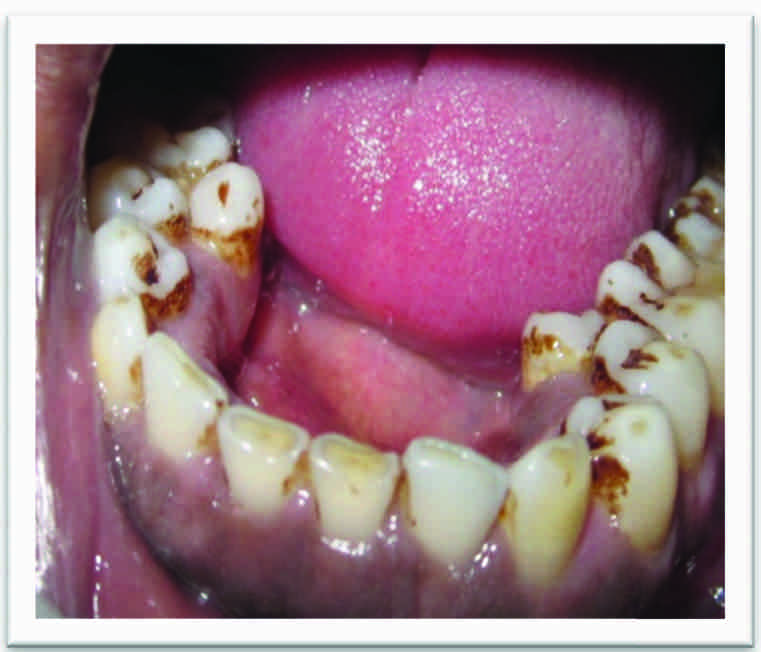
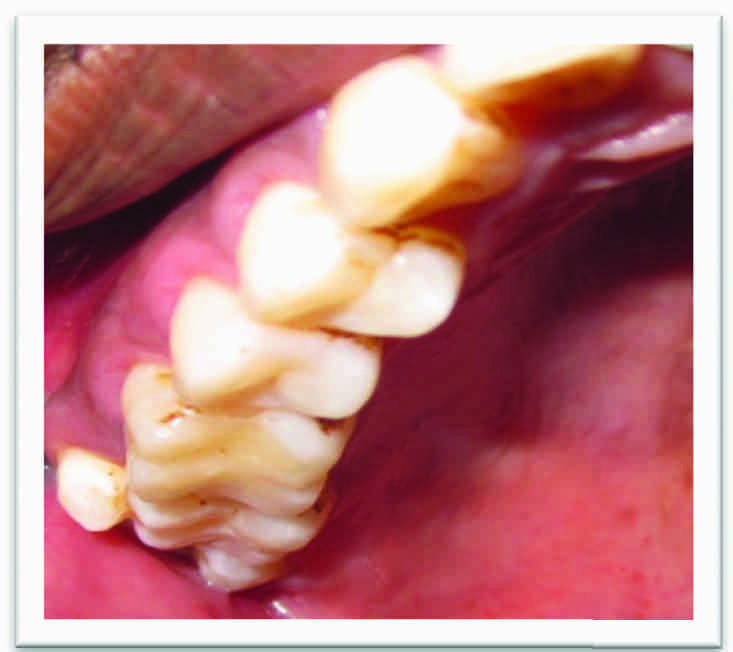
Shows Multiple Supernumerary Teeth
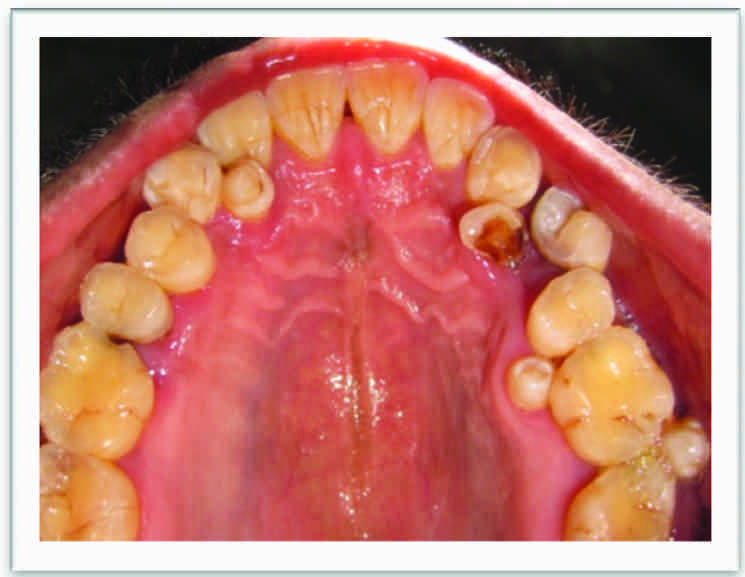
Shows IOPA of Impacted Inverted Mesiodens
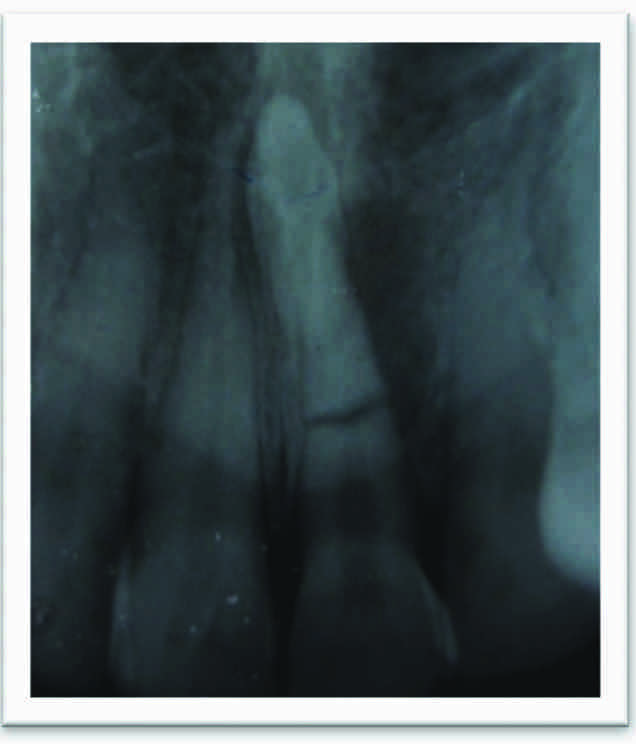
Shows IOPA of Supplemental Premolar

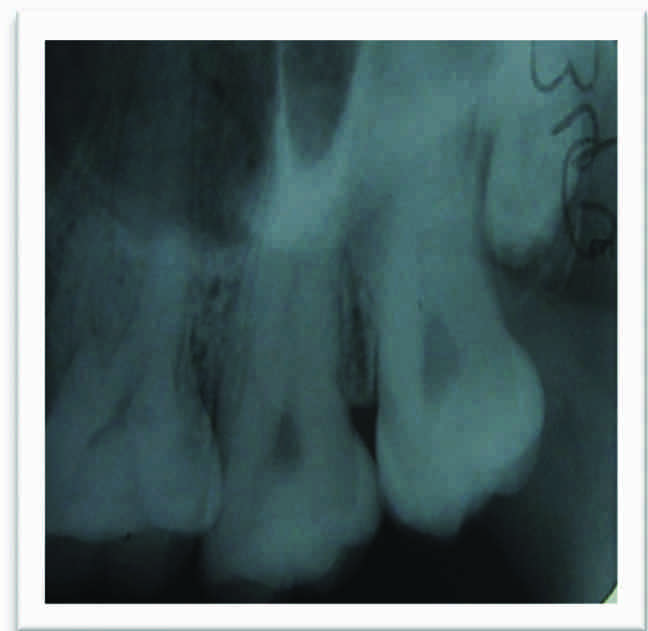
Shows OPG with Multiple Impacted Supernumerary Teeth
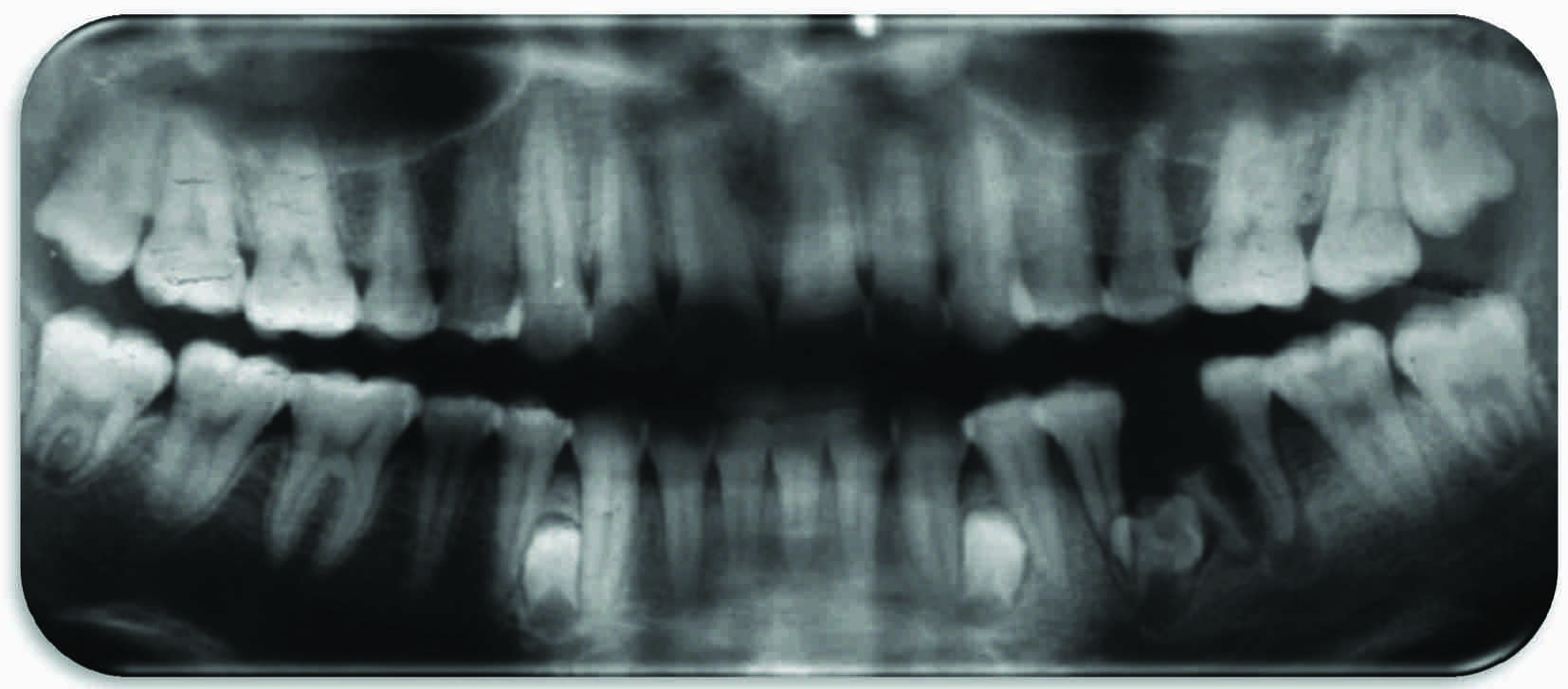
SUMMARY AND CONCLUSION
Supernumerary teeth are a group of dental anomalies that give rise to many complications, pathologies, etc. These teeth are also associated with various syndromes and they might show familial occurrences. A study was undertaken to know these associations among the supernumerary teeth in the 5,000 patients who visited MADC, Chennai, India, who were divided into three different age groups and analyzed. This study revealed the prevalence of the supernumerary teeth to be 1.56%, with a male:female ratio of 2:1. The study also revealed that the permanent dentition showed a higher number of cases with a greater prevalence in the maxillary jaws. Supplemental teeth in the premolar region were more common in our study population, while single erupted cases were recorded to a larger extent, with a higher distribution in the maxillary midline region.
Our observations conclude that although supernumerary teeth are unusual anomalies, they are not as rare as was previously reported. The identification of this anomaly, thus, could provide a hint towards the possibility of complications, pathologies, other dental anomalies, syndromes and familial associations.